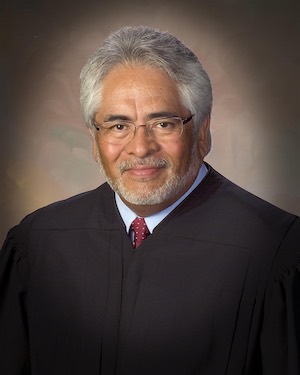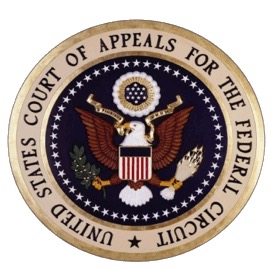Federal Circuit finds no problem with district court re-submitting case to jury
 On January 19, 2018, the Federal Circuit issued a decision in Flexuspine, Inc. v. Globus Med. The appeal centered on the jury verdict form and how the jury specifically handled its duties in relation to that jury form.
On January 19, 2018, the Federal Circuit issued a decision in Flexuspine, Inc. v. Globus Med. The appeal centered on the jury verdict form and how the jury specifically handled its duties in relation to that jury form.
The jury form included what is known as a “stop instruction,” which told the jury not to consider any of the invalidity defenses unless they first determined that the defendant was liable for infringement. Globus, the defendant, did not object to the instruction prior to jury deliberations.
Upon reviewing the verdict form after deliberations ended, the district court determined that the jury had not followed the instructions and had filled out the verdict form incorrectly. The jury found no infringement, but did not stop there, and instead moved on to consider invalidity and damages. The jury form indicated that the jury found the claims invalid, and no damages should be awarded.
En banc Federal Circuit overrules Achates on IPR appealability
 Several weeks ago, the Federal Circuit issued an en banc decision in Wi-Fi One, LLC v. Broadcom Corp.
Several weeks ago, the Federal Circuit issued an en banc decision in Wi-Fi One, LLC v. Broadcom Corp.
This dispute arose because Congress provided that the Director’s determination “whether to institute an inter partes review under this section shall be final and nonappealable.” Id. § 314(d). Notwithstanding, Congress similarly prohibited the Director from instituting inter partes review if the petition requesting that review is filed more than one year after the petitioner, real party in interest, or privy of the petitioner is served with a complaint for patent infringement. 35 U.S.C. § 315(b).
A panel of the Federal Circuit previously held that a § 315(b) time-bar determination is final and nonappealable under § 314(d). See Achates Reference Publishing, Inc. v. Apple Inc. Therefore, in this en banc appeal, the Federal Circuit had to determine whether the bar on judicial review of institution decisions in § 314(d) applies to time-bar determinations made under § 315(b).
The Federal Circuit reversed Achates, and ruled that time-bar determinations under § 315(b) are appealable.
“We find no clear and convincing indication in the specific statutory language in the AIA, the specific legislative history of the AIA, or the statutory scheme as a whole that demonstrates Congress’s intent to bar judicial review of § 315(b) time-bar determinations,” wrote Reyna (pictured left) in the majority opinion. The lack of such a clear and convincing indication from Congress coupled with the strong presumption in favor of judicial review of agency actions lead the majority to hold that time-bar determinations under § 315(b) are appealable. Therefore, this decision overrules Achates’ contrary conclusion.
Substantively, the majority explained that, after reviewing the entire statutory scheme as a whole, § 315 is not substantively related to the institution decision addressed in § 314(a), and it therefore is not subject to § 314(d)’s bar on judicial review.
A concurring opinion was filed by Judge O’Malley. In her concurring opinion, Judge O’Malley wrote that she agreed with the ruling of the majority, but thought the majority made the question more difficult than it needed to be. O’Malley wrote:
If the United States Patent and Trademark Office (“PTO”) exceeds its statutory authority by instituting an IPR proceeding under circumstances contrary to the language of § 315(b), our court, sitting in its proper role as an appellate court, should review those determinations. Indeed, we should address those decisions in order to give effect to the congressionally imposed statutory limitations on the PTO’s authority to institute IPRs.
O’Malley further explained:
Section 314(d)’s bar on appellate review is directed to the Director’s assessment of the substantive adequacy of a timely filed petition. Because § 315(b)’s time bar has nothing to do with the substantive adequacy of the petition and is directed, instead, to the Director’s authority to act, § 314(d) does not apply to decisions under that provision.
02.5.18 | Federal Circuit Cases, Inter Partes Review, Patent Issues | Gene Quinn
CAFC reverses on erroneous application of BRI
 The United States Court of Appeals for the Federal Circuit recently issued a decision in In re Smith International, Inc. As described by Judge Alan Lourie, writing for the unanimous panel (consisting of Judges Reyna and Hughes), “[t]his case primarily concerns what the word ‘body’ means in the context of the ‘817 patent.” More specifically, however, the legal point at issue making this case a precedential decision was how far the Patent Office may go when applying the “broadest reasonable interpretation” (“BRI”). The Federal Circuit decided that in applying the broadest reasonable interpretation, the examiner and Patent Trial and Appeal Board (PTAB) arrived at an unreasonable interpretation not supported by the specification.
The United States Court of Appeals for the Federal Circuit recently issued a decision in In re Smith International, Inc. As described by Judge Alan Lourie, writing for the unanimous panel (consisting of Judges Reyna and Hughes), “[t]his case primarily concerns what the word ‘body’ means in the context of the ‘817 patent.” More specifically, however, the legal point at issue making this case a precedential decision was how far the Patent Office may go when applying the “broadest reasonable interpretation” (“BRI”). The Federal Circuit decided that in applying the broadest reasonable interpretation, the examiner and Patent Trial and Appeal Board (PTAB) arrived at an unreasonable interpretation not supported by the specification.
The examiner interpreted the critical term “body” as being very broad and possible of encompassing other components such as a “mandrel” and a “cam sleeve,” which were taught by the Eddison reference. The Board affirmed this interpretation by the examiner because the specification did not prohibit the examiner’s broad reading of the term “body.”
10.25.17 | Federal Circuit Cases, Patent Issues | Gene Quinn
CAFC strikes down EDTX venue test
 The United States Court of Appeals for the Federal Circuit has struck down a much-criticized venue test created by Judge Rodney Gilstrap of the United States Federal District Court for the Eastern District of Texas. See In re: Cray Inc.
The United States Court of Appeals for the Federal Circuit has struck down a much-criticized venue test created by Judge Rodney Gilstrap of the United States Federal District Court for the Eastern District of Texas. See In re: Cray Inc.
In a unanimous panel decision authored by Judge Alan Lourie (joined by Judges Reyna and Stoll), the Federal Circuit found that Judge Gilstrap misinterpreted the scope and effect of Federal Circuit precedent in determining that Cray maintained “a regular and established place of business” in the Eastern District of Texas within the meaning of 28 U.S.C. § 1400(b). Accordingly, Judge Gilstrap’s denial of Cray’s transfer motion was an abuse of discretion. The Federal Circuit panel ordered the case transferred, but did not decide to which court the case should be transferred. While Cray would prefer transfer to the Western District of Wisconsin, Raytheon would prefer transfer to the Western District of Texas. The Federal Circuit left the decision of which district to transfer the case to for remand.
10.24.17 | Federal Circuit Cases, Patent Issues | Gene Quinn
Burden of persuasion on Petitioner for IPR amendments
 On October 4, 2017, the United States Court of Appeals for the Federal Circuit issued its much-anticipated decision in Aqua Products, Inc. v. Matal, addressing en banc whether the patent owner has the burden of proving patentability with respect to submitted amended claims during an inter partes review (IPR) proceeding. Previous panels of the Federal Circuit had ruled that the burden of persuasion to demonstrate patentability was with the patent owner, not with the challenger. Sitting en banc, the Federal Circuit issued a narrow ruling saying that the burden of persuasion must remain at all times on the petitioner, including with respect to demonstration of unpatentability of amended claims.
On October 4, 2017, the United States Court of Appeals for the Federal Circuit issued its much-anticipated decision in Aqua Products, Inc. v. Matal, addressing en banc whether the patent owner has the burden of proving patentability with respect to submitted amended claims during an inter partes review (IPR) proceeding. Previous panels of the Federal Circuit had ruled that the burden of persuasion to demonstrate patentability was with the patent owner, not with the challenger. Sitting en banc, the Federal Circuit issued a narrow ruling saying that the burden of persuasion must remain at all times on the petitioner, including with respect to demonstration of unpatentability of amended claims.
The ruling of the court was described to be “narrow” by Judge O’Malley, who wrote for the majority in announcing the limited decision. There was no consensus among the Judges with respect to the judgment that should be reached and the rationale that should be employed, which meant very little of what was actually written in the five opinions and some 135 pages was actually precedential. This lack of consensus would explain why it took the Federal Circuit ten months after the oral arguments in this case to issue a decision.
10.10.17 | CAFC, Federal Circuit Cases, Inter Partes Review, Patent Issues, USPTO | Gene Quinn


No Comments
02.6.18 | Federal Circuit Cases, Patent Issues, Patent Litigation | Gene Quinn